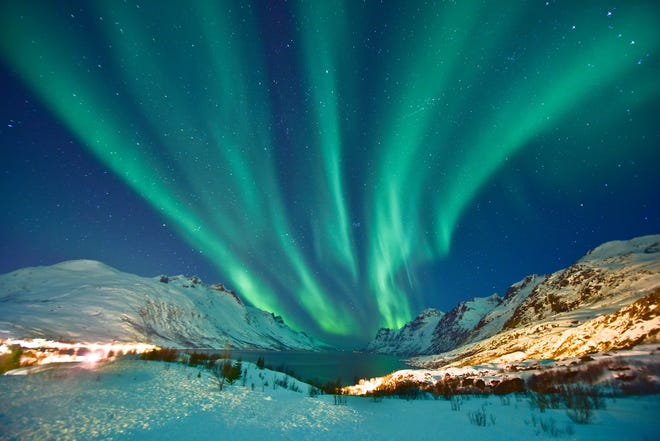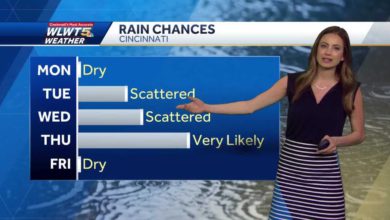
The northern lights, aka the aurora borealis, could be visible over portions of the northern U.S. Wednesday night, space weather forecasters said.
The lights might be seen farther south than usual, and might even be visible in U.S. states such as Oregon, Nebraska and Virginia, SpaceWeather.com reported.
The sky show is due to a geomagnetic storm that's now hurtling toward the Earth.
According to Space.com, the geomagnetic storm is the result of a massive coronal mass ejection from the sun that took place Sunday evening. Energetic particles from the outburst were forecast to arrive early Wednesday morning.
The National Oceanic and Atmospheric Administration's Space Weather Prediction Center said Wednesday that more storm impacts from another mass ejection are expected on Thursday and Friday — so tonight may not be your only chance to see the northern lights this week.
Northern lights photos:See aurora borealis light up skies across several states

Where will the northern lights be visible Wednesday?
According to the National Oceanic and Atmospheric Administration's Space Weather Prediction Center, the northern lights are most likely to be seen across the northern tier of the U.S., such as in northern Michigan and Maine, on Wednesday night.
The lights may also be seen in Alaska and parts of Canada.
NOAA reports that the northern lights will likely be visible tonight in portions of these "Lower 48" states: Washington, Idaho, Montana, North Dakota, South Dakota, Minnesota, Wisconsin, Michigan, New York, and Maine.
As of late afternoon Wednesday, satellite images showed that skies were clear across much of the northern tier of the U.S., except for some cloudy areas in western Montana, the eastern Dakotas and much of Minnesota.
The colorful aurora forms when particles flowing from the sun get caught up in Earth's magnetic field. The particles interact with molecules of atmospheric gases to cause the famed glowing green and reddish colors of the aurora.
Tips for viewing the northern lights
"Go out at night," NOAA said. "And get away from city lights. The moon will also diminish the apparent brightness of the aurora."
The best aurora is usually within an hour or two of midnight (between 10:00 p.m. and 2:00 a.m. local time). These hours expand towards evening and morning as the level of geomagnetic activity increases.
There may be aurora in the evening and morning, but it is usually not as active and therefore, not as visually appealing, NOAA said.
G2 geomagnetic storm is responsible
NOAA rated the geomagnetic storm a G2, or "moderate" level event.
A G2 is the second level of NOAA's five-level solar storm scale. (G1 storms are minor, and G5s are considered extreme.) The higher the level, the more likely the aurora will appear.
Geomagnetic storms can affect the Earth's infrastructure, possibly disrupting communications, power grids, navigation, radio and satellite operations, NOAA said. Disruptions to technology from a G2 storm generally remain small, but the storm can drive the aurora farther south from its usual position over the polar region, NOAA said.
Impacts from the geomagnetic storm are expected to wane by Thursday and Friday, NOAA said.
Photo gallery: Best spots to see the northern lights
Source link








